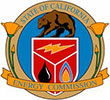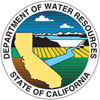Process-informed Nonstationary Extreme Value Analysis (ProNEVA)
Process-informed Nonstationary Extreme Value Analysis (ProNEVA) is a Matlab software package designed to facilitate extreme value analysis (EVA) under both stationary and nonstationary assumptions. ProNEVA allows using time or a physically-based covariate to describe change in statistics of extremes. Examples of physically-based covariates include: change in runoff extremes in response to urbanization, or change in temperature extremes as a function of CO2 in the atmosphere. ProNEVA estimates the parameters of the Generalized Extreme Value (GEV), the Generalized Pareto (GP), and the Log-Pearson Type III (LP3) distributions. The model includes a Bayesian approach and a hybrid Markov Chain Monte Carlo (MCMC) method for sampling from the posterior distribution. ProNEVA also provides diagnostic tests and return period-return level plots. The source code of the toolbox is released along with a Graphical User Interface (GUI). By using ProNEVA, the users agree to the below disclaimer included in the package.
Click Here to Download the Toolbox
Reference Publications:
Ragno E., AghaKouchak A., Cheng L., Sadegh, M., 2019, A Generalized Framework for Process-informed Nonstationary Extreme Value Analysis, Advances in Water Resources, 130, 270-282, doi: 10.1016/j.advwatres.2019.06.007, (pdf)
Nexus of Food Energy Water (NeFEW) Toolbox
Nexus of Food Energy Water (NeFEW) toolbox synthesizes available global data to enable modeling and analysis of these resources and their interdependencies at the country-level and for user-specified categories and quantities. Sample analyses include country-specific estimates of water resources required to produce different types of food and energy, energy required per quantity of water or agricultural product supplied, and CO2-equivalent emissions associated with water and energy provision.
Click Here to Download the Toolbox
Reference Publications:
Sadegh, M., et al., Data and analysis toolbox for modeling the nexus of food, energy, and water, , in revision.
Nonstationary Conceptual Rainfall Runoff Toolbox (NCRRT)
Nonstationary Conceptual Rainfall Runoff Toolbox (NCRRT) allows for time-variant modeling of rainfall-runoff processes (i.e., hydrologic modeling with time varying parameters). The toolbox comes with 5 built-in hydrologic models including GR4J, GR5J, GR6J, HyMod, and HBV (source code of each model is available in the package). The user can select one model parameter as function of time (a time-variant parameter that evolves over time) within any time interval to address physical changes in the actual watershed (e.g., modeling the effect of deforestation or urbanization over time).
Click Here to Download the Toolbox
Reference Publications:
Sadegh M, AghaKouchak A, Flores A, Mallakpour I, Nikoo MR, 2019, A Multi-Model Nonstationary Rainfall-Runoff Modeling Framework: Analysis and Toolbox, Water Resources Management, doi: 10.1007/s11269-019-02283-y (pdf)
Multi-hazard Scenario Analysis Toolbox (MhAST)
MhAST is the updated version of MvCAT and it presents a general framework for obtaining multi‐hazard design and risk assessment scenarios and their corresponding likelihoods. MhAST can be used for generating joint return periods using different hazard scenarios (e.g., OR, AND Hazard Scenarios). Similar to MvCAT it is developed in Matlab as a user-friendly toolbox (software). It uses 26 copula families with 1 to 3 parameters to describe the dependence structure of two random variables. Both the source code and a graphical user interface (GUI) are available to the public. The parameter estimation and uncertainty analysis components are similar to MvCAT
Click Here to Read More and Download Source Code
Reference Publications:
Sadegh M., Moftakhari H.M., Gupta H.V., Ragno E., Mazdiyasni O., Sanders, B.F., Matthew, R.A., AghaKouchak A., 2018, Multi‐Hazard Scenarios for Analysis of Compound Extreme Events , Geophysical Research Letters, 45, 5470-5480, doi: 10.1029/2018GL077317 (pdf)
Multivariate Copula Analysis Toolbox (MvCAT)
MvCAT is developed in Matlab as a user-friendly toolbox (software) to help scientists and researchers perform rigorous and comprehensive multivariate dependence analysis. It uses 26 copula families with 1 to 3 parameters to describe the dependence structure of two random variables. MvCAT uses local optimization and also Markov chain Monte Carlo simulation within a Bayesian framework to infer the parameter values of the copula families by contrasting them against available data. If Bayesian analysis with MCMC simulation is performed, an estimate of uncertainty for each copula family can be obtained from the posterior distribution of copula parameters. MCMC within Bayesian framework not only provide a robust estimate of the global optima, but also approximate the posterior distribution of the copula families which can be used to construct a prediction uncertainty range for the copulas. Local optimization methods are prone to getting trapped in local optima (see Sadegh et al., 2017 for more information). The user ca select any subset of the available 26 copulas and MvCAT will perform the analysis and rank the selected copula families based on their performance. Performance metrics used in this toolbox are Likelihood, Akaike Information Criterion (AIC), Bayesian Information Criterion (BIC), Nash-Sutcliffe Efficiency (NSE), and Root Mean Squared Error (RMSE). While Likelihood, NSE and RMSE only focus on minimizing the residuals between observations and model simulations, the other metrics take into consideration additional criteria. For example, AIC takes into account the model complexity and BIC account for model complexity and number of observations.
Click Here to Read More and Download Source Code
Reference Publications:
Sadegh M., Ragno E. and AghaKouchak A., 2017, Multivariate Copula Analysis Toolbox (MvCAT): Describing dependence and underlying uncertainty using a Bayesian framework , Water Resources Research, 53, doi:10.1002/2016WR020242. (pdf)
Nonstationary Extreme Value Analysis (NEVA) Software Package
The Nonstationary Extreme Value Analysis (NEVA) software package has been developed to facilitate extreme value analysis under both stationary and nonstationary assumptions. In a Bayesian approach, NEVA estimates the extreme value parameters with a Differential Evolution Markov Chain (DE-MC) approach for global optimization over the parameter space. NEVA includes posterior probability intervals (uncertainty bounds) of estimated return levels through Bayesian inference, with its inherent advantages in uncertainty quantification. The software presents the results of non-stationary extreme value analysis using various exceedance probability methods. We evaluate both stationary and non-stationary components of the package for a case study consisting of annual temperature maxima for a gridded global temperature dataset. The results show that NEVA can reliably describe extremes and their return levels.
Click Here to Read More and Download Source Code
Reference Publications:
Cheng L., AghaKouchak A., Gilleland E., Katz R.W., 2014, Non-stationary Extreme Value Analysis in a Changing Climate , Climatic Change, doi: 10.1007/s10584-014-1254-5. (pdf)
Standardized Drought Analysis Toolbox (SDAT)
SDAT can be used to generate nonparametric standardized drought indicators such as Standardized Precipitation Index (SPI), Standardized Soil Moisture Index (SSI), Standardized Runoff Index (SRI) Standardized Streamflow Index (SSFI), Standardized Relative Humidity Index (SRHI), Standardised Groundwater level Index (SGI), Standardized Surface Water Supply Index (SSWSI), Standardized Water Storage Index (SWSI).
Click Here to Read More and Download SDAT Source Code
Reference Publications:
Hao Z., AghaKouchak A., Nakhjiri N., Farahmand A., 2014, Global Integrated Drought Monitoring and Prediction System, Scientific Data, 1:140001, 1-10, doi: 10.1038/sdata.2014.1. (pdf)
Farahmand A., AghaKouchak A., 2015, A Generalized Framework for Deriving Nonparametric Standardized Drought Indicators, Advances in Water Resources, 76, 140-145, doi: 10.1016/j.advwatres.2014.11.012. (pdf)
Multivariate Standardized Drought Index (MSDI)
Multivariate Standardized Drought Index (MSDI) offers a multi-index drought monitoring framework for combining drought information from multiple variables (e.g., precipitation, soil moisture). The following code compares the parameteric and nonparametric MSDI described in the below two papers:
Click Here to Read More and Download Source Code
Reference Publications:
Hao Z., AghaKouchak A., 2013, Multivariate Standardized Drought Index: A Parametric Multi-Index Model, Advances in Water Resources, 57, 12-18, doi: 10.1016/j.advwatres.2013.03.009. (pdf)
Hao Z., AghaKouchak A., 2014, A Nonparametric Multivariate Multi-Index Drought Monitoring Framework, Journal of Hydrometeorology, 15, 89-101, doi:10.1175/JHM-D-12-0160.1. (pdf)
Validation Toolbox Ver. 1
Performance Metrics for Evaluation of Remote Sensing Observations and Climate Model Simulations: A simple and easy to use Validation Toolbox (MATLAB source code) that can be used for validation of gridded data including satellite observations, reanalysis data, and weather and climate model simulations. In addition to the commonly used categorical indices, the toolbox includes the Volumetric Hit Index (VHI), Volumetric False Alarm Ration (VFAR), Volumetric Missed Index (VMI), and Volumetric Critical Success Index (VCSI).
Authors: Mehran A., and AghaKouchak A.
Reference Publications:
AghaKouchak A., Mehran A., 2013, Extended Contingency Table: Performance Metrics for Satellite Observations and Climate Model Simulations, Water Resources Research, 49, 7144-7149, doi:10.1002/wrcr.20498.
AghaKouchak A., Behrangi A., Sorooshian S., Hsu K., Amitai E., 2011, Evaluation of satellite-retrieved extreme precipitation rates across the Central United States, Journal of Geophysical Research, 116, D02115, doi:10.1029/2010JD014741.
Download Validation Toolbox Code and Sample Data
HBV Hydrologic Model
MATLAB source code of the modified version of the HBV hydrologic model model including automatic parameter uncertainty estimation based on the Generalized likelihood uncertainty estimation (GLUE).
Authors: Nakhjiri N., Habib E., and AghaKouchak A.
Reference Publication:
AghaKouchak A., Habib E., 2010, Application of a Conceptual Hydrologic Model in Teaching Hydrologic Processes, International Journal of Engineering Education, 26(4), 963-973.
HBV Ensemble
MATLAB source code of the HBV_Ensemble (ensemble streamflow simulation using HBV).
Authors: Nakhjiri N., Habib E., and AghaKouchak A.
Reference Publication:
AghaKouchak A., Nakhjiri N., and Habib E., 2013, An educational model for ensemble streamflow simulation and uncertainty analysis, Hydrology and Earth System Sciences, 17, 445-452, doi:10.5194/hess-17-445-2013.
Download HBV_Ensemble Matlab Code
Sponsors








